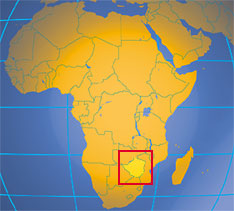All power generation assets and operations are under ZESA Holdings generation subsidiary, the Zimbabwe Power Company (ZPC). The present total capacity is 1 475 MW, but peak demand is 2 000 MW and Zimbabwe imports up to 500 MW from neighbours Zambia, Mozambique and the Democratic Republic of Congo. It also has a stand-by agreement for emergency power supplies with South Africa.
The Kariba South project was commissioned in September 2014 and is expected to feed an additional 300 MW into the national grid on completion. It involves building two 150 MW power generating units to be added to the existing six, 125 MW generating units. It is expected to increase total capacity at Kariba from 750 MW to 1 050 MW by 2017. Sinohydro -- a Chinese state-owned company and the world's largest hydropower construction company with a 50% share of the international hydropower market -- won the tender to carry out the power extension project in 2012.
ZPC
is also considering and planning the following:
- Hwange Power Station Expansion additional capacity 600 MW
- Batoka Gorge Hydroelectric Scheme additional capacity 800 MW
- Lupane Coalbed Methane additional capacity 300 MW
- Gairezi Hydroelectric Scheme additional capacity 30 MW
- Devil's Gorge Hydroelectric Scheme additional capacity 620 MW
- ZPC Solar additional capacity 300 MW
Zimbabwe
Electricity Supply Authority (ZESA) on 24
September 2015 published its
new 'summer shedding programme'. According to the schedule many
suburbs of the capital Harare and beyond would have cuts every day,
some of them lasting for 18 hours. "The level and duration of
load-shedding may go beyond the advertised schedules," warned
the state-run Zimbabwe Electricity Transmission and Distribution
Company, a Zesa subsidiary. Authorities blamed the intensification of
power cuts on low water levels at Lake Kariba, limited power imports,
and low generation at the main Hwange power station.
Thermal
power stations
- Hwange Power Station has an installed capacity of 920 MW
- Harare Power Station has a capacity of 30 MW which will be increased to 60 MW by the end of 2015.
- Munyati Thermal Power Station has a capacity of 26 MW
- Bulawayo Thermal Power Station has a capacity of 22 MW
- A Zimbabwean company in July 2015 signed a $1.1 bn agreement with the China State Construction Engineering Corporation (CSCEC) to build a 600 MW thermal power plant. Construction should begin early 2016 with the first phase completed in 2019.
- Sable Mining, the AIM listed exploration and development company, announced in September 2015 that it had entered into a Memorandum of Understanding with a view to developing a 600 MW coal-fired power plant at the Company's 19 236 hectares Lubu Coal Project in Zimbabwe (Lubu), with CITIC Construction Co Ltd, a subsidiary of CITIC Group, a Chinese-based construction and services provider
Hydroelectric
power stations
- Kariba Hydroelectric Power Station has an installed capacity of 700 MW
- Work started in 2013 on damming the Batoka Gorge for a 1 600 MW scheme downstream of Victoria Falls on the Zambezi River, which forms the border between Zambia and Zimbabwe.


No comments:
Post a Comment